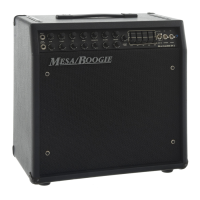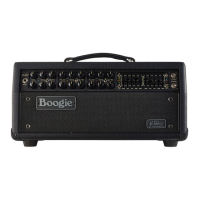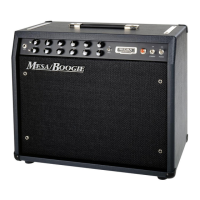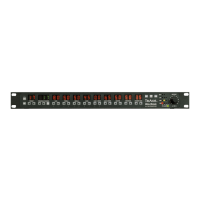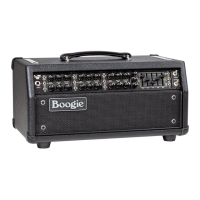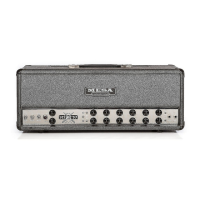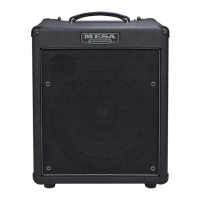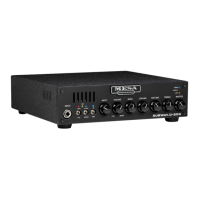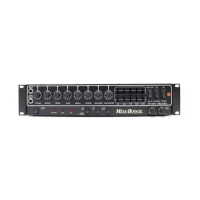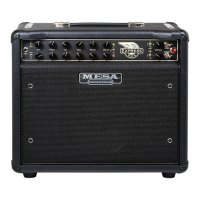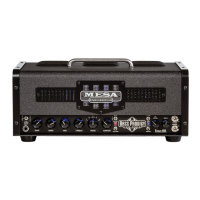HELPFUL HINTS
NOTE: REDUNDANT INFORMATION: Throughout this Operating Guide you may encounter redundant information and sections
that are repeated for your continued awareness and as reminders. This is done so a person can read only the sections they are
interested in, and yet still get the important points they should know or NEED to know about the California Tweed. We apologize if
this gets annoying for the cover-to-cover reader, but even they may appreciate it sometime in the future when referencing this Guide
quickly for a specific topic.
• We suggest using the NORMAL Input first to explore the amplifier, as it will provide the unadulterated full range of sounds pos-
sible, including clip/overdrive sounds, with any given guitar.
• For maximum headroom and clarity for Clean sounds, try the LOW Input (and the 40 Watt setting on the POWER SELECT
Rotary). It may be darker sounding, but the preamp will tolerate more input signal from hot pickups before the onset of tube
saturation/clipping, which may or may not be desirable depending on the stylistic application.
• Beware of high settings on the BASS control especially when the GAIN is set high. Too much BASS will produce a flubby,
indistinct attack and “slow” the response time. A basic rule regarding the BASS control might be this; As the GAIN goes up...the
BASS should come down.
• The GAIN and TREBLE Controls are the most powerful tone shaping controls and should be used with taste. They determine
much about the attack characteristic and the overall personality of the sound. Many of the great sounds will find these two Con-
trols in their middle ranges.
NOTE: When possible, avoid setting the TREBLE high (above 2:30) when the GAIN is to be set high as this brings about
the tendency for a slightly microphonic tube to ring or squeal.
• Your amplifier will sound better and feel better to play if you have at least one speaker cabinet touching the floor you are standing
on while you play. The coupling effect and especially the transmission of bass frequencies will cause the amp to sound fatter
and the strings to feel more substantial and tangible when the amp (or cab) sits on the floor. Wood floors (like stages) are really
great! Let’s face it... the guitar can be one of those weird instruments that rarely feels the same way two days in a row, night to
night, from room to room... and we can use all the help we can get. This usually helps... with the only exception being a stage
filled with many live mics...sometimes then you may be forced to lift the amp to avoid the coupling effect creating resonances
that will cloud up a mix or cause things to “runaway” in the low end.
• Use the STANDBY switch (Set Left) every time you power-up (from cold or hot), during set breaks, cable hook-ups and anytime
you are not playing for a few minutes. Doing so will increase the toneful life of your tubes.
• Circuits emanating from this “other side” of the MESA Line (as in non-MARK amplifiers) like your California Tweed, tend to favor
TREBLE and PRESENCE control settings on the lower side for sounds that are balanced and/or in the warmer domain. Depend-
ing on guitar woods, pickups and technique, don’t be surprised if you find great sounds below 12:00, or even all the way off on the
TREBLE and PRESENCE, with the MID’s broad Q (that carries substantial top end) providing all the top end cut you need.
• In the California Tweed, different and unique top end frequencies are found in the TREBLE, MID and PRESENCE controls. We
suggest becoming familiar with what each of these powerful controls bring out or bury in the mix and learn to “swap the top” as
you see fit for different styles, characters, responses and attack center-points. Spending a little time early on with these three
powerful Tone and “dynamic” controls will allow you to dial up sounds quickly and easily and enhance your enjoyment of the
amplifier.
• While the California Tweed’s output section is not overly sensitive to impedance matching, its sound is affected by it. We sug-
gest auditioning the 4 Ohm Speaker Output on the three lowest, 20, 10 and 2 Watt Power Selections, as the 4 Ohm Output
produces a more technically “correct” load scenario. The sound may be brighter and punchier in the 4 Ohm Jack, but regard-
less, leaving it in the 8 Ohm Output will not harm the amplifier and for many sounds or players, the mismatch may be preferable.
PAGE 4
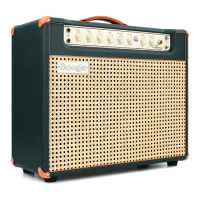
